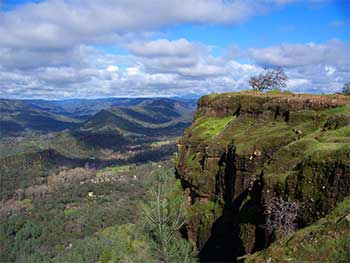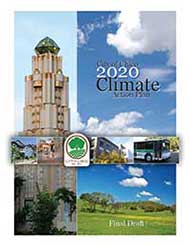Phase I of the Climate Action Plan considers the emissions-reducing actions taken since the greenhouse gas (GHG) inventory 2005 baseline year, and it includes additional actions to be undertaken by the City and throughout the community before 2015.
Achieving the City’s GHG reduction target will require considerable changes within the community over the next decade. Chico will need to reduce both energy and water use, reduce waste, and improve the appeal of alternative transportation modes. To ensure this transformation occurs, the CAP contains actions that are ambitious, yet attainable. A list of potential actions was developed by:
- Evaluating existing community conditions.
- Identifying GHG reduction opportunities within the City, including those identified by the City’s Sustainability Task Force.
- Considering suggestions from the local community.
- Reviewing policy direction in the Chico 2030 General Plan.
- Reviewing best practices from leading cities and organizations.
- Incorporating State and regional laws, guidelines, and recommendations.
 Many of the potential actions were evaluated for their cost-effectiveness in terms of real costs and potential for reducing GHG emissions, and those actions deemed infeasible or cost-prohibitive were removed from the list. Beyond cost effectiveness, Phase I actions were also included for being particularly applicable to local circumstances, already being implemented or easy to implement, and due to special circumstances surrounding an action, such as projects that are “shovel-ready” or where funding opportunities presented themselves. This chapter presents the Phase I actions and then explains the costbenefit analysis that informed selection of the actions.
Many of the potential actions were evaluated for their cost-effectiveness in terms of real costs and potential for reducing GHG emissions, and those actions deemed infeasible or cost-prohibitive were removed from the list. Beyond cost effectiveness, Phase I actions were also included for being particularly applicable to local circumstances, already being implemented or easy to implement, and due to special circumstances surrounding an action, such as projects that are “shovel-ready” or where funding opportunities presented themselves. This chapter presents the Phase I actions and then explains the costbenefit analysis that informed selection of the actions.
The goal for Phase I of the CAP is to reduce the GHG emissions generated in the Chico area to 10% below 2005 baseline levels by 2015, which means offsetting annual emissions below the business as usual (BAU) projection for 2015 by 165,820 MtCO2e. The City of Chico and other members of the community are already undertaking significant efforts to reduce GHG emissions. These actions range from transforming fleets to run on renewable fuels to promoting walking and bicycling to installing solar panels throughout the community. With leadership from the Sustainability Task Force, the City has worked closely with local utility companies, the county, state agencies, and local businesses to identify a range of actions for implementation in Phase I.



